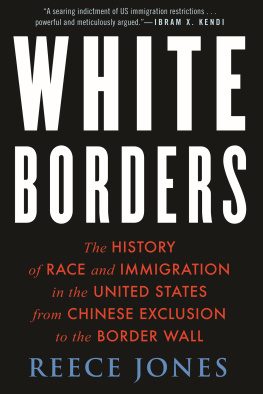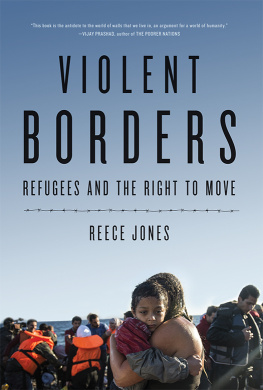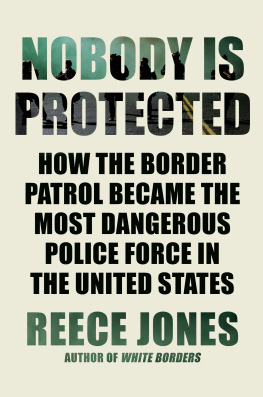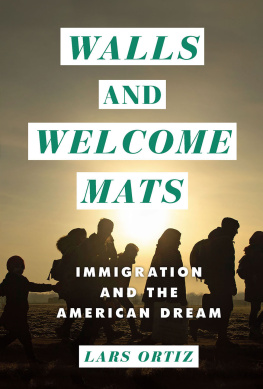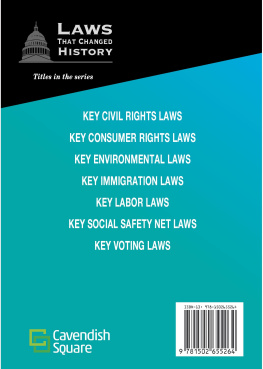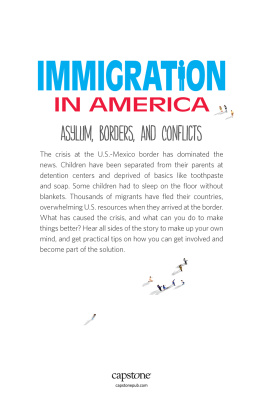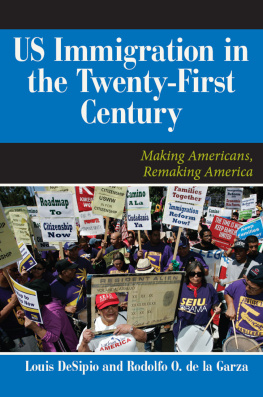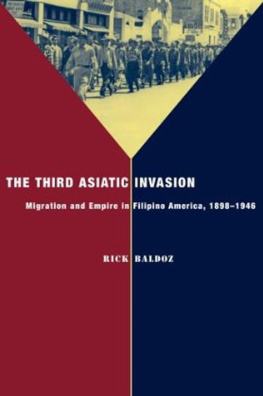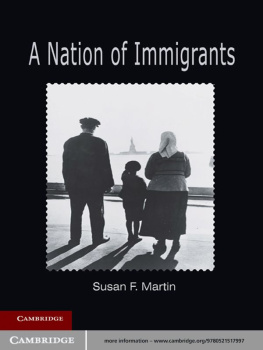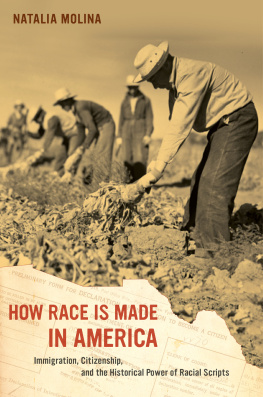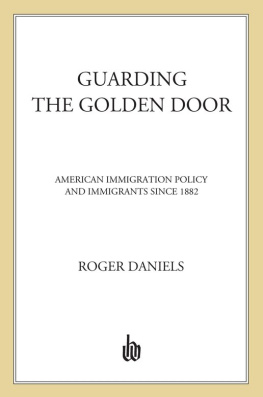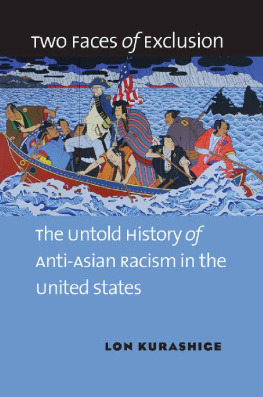Contents
Pagebreaks of the print version
Guide


LIST OF TABLES
PROLOGUE
Y ou. Will not. Replace us. You. Will not. Replace us.
With torches in hand and rage in their voices, hundreds of white men marched along tree-lined red brick sidewalks through the stately grounds of the University of Virginia on the evening of August 11, 2017. As they neared the iconic dome of the Rotunda, Thomas Jeffersons architectural masterpiece and a World Heritage Site, the evocation of You. Will not. Replace us morphed into Jews. Will not. Replace us.
After passing through the Greek columns of the Rotunda, the white marchers streamed down the north steps into the red brick plaza below, itching for a fight. They found one in the form of a few dozen counterprotesters encircling the statue of Thomas Jefferson at the center of the plaza, with arms interlocked as if to protect a fragile idea. The counterprotesters were mostly young, mostly women, along with a few Black men. They chanted, No Nazis. No KKK. No fascist USA, but their small numbers in the vast space of the Rotunda dissipated their voices, making their grip on Jeffersons legacy seem plaintive and tenuous. They eyed the growing mass of white nationalists warily, as more and more hyped-up men spilled into the plaza.
The location of the standoff could not have been more appropriate. As Thomas Jefferson stood aloof above, two different visions for the future of America, both of which Jefferson himself had set in motion, collided at his feet.

The Jefferson statue on the north plaza of the Rotunda was sculpted by Moses Ezekiel in 1910. Ezekiel was born in Richmond in 1844, and, as the Civil War got under way, he became the first Jewish student to enroll at the Virginia Military Institute. At VMI, his roommate was Thomas Jeffersons grandnephew, Thomas G. Jefferson. They served together in the Confederate Army during the war, and the younger Jefferson died in battle as Ezekiel held him in his arms. Ezekiel fought for the Confederacy until the bitter end, hunched in the trenches at Richmond as the city fell in 1865. After the war, he completed his degree at VMI and then moved to Europe to pursue his interest in sculpture, studying in Berlin before settling in Rome, where he lived for the remainder of his life.
Largely forgotten today, Ezekiel was one of the preeminent sculptors in the world at the turn of the twentieth century, but his most famous works are monuments to the Confederacy. The majority of the seven hundred Confederate statues that dot public spaces across the United States were not built immediately after the war but rather between 1890 and 1950, at the height of the Jim Crow era, as the antebellum white order was resurgent across the South and the entire country. These monuments still stand in thirty-one states, far beyond the eleven that were part of the Confederacy. Ezekiel sculpted a statue of Confederate general Stonewall Jackson for the grounds of the West Virginia State Capitol, a memorial titled Virginia Mourns Her Dead on the VMI campus, and the Confederate Memorial at Arlington National Cemetery, which was dedicated in 1914. With his connections to the Jefferson family and the South, he was the obvious choice for the Thomas Jefferson statue on the campus of the University of Virginia.
Despite Ezekiels Confederate bona fides, the design of the statue at the Rotunda focuses entirely on Jeffersons universalist writings. Jefferson penned some of the most famous lines of the Declaration of Independence, including the idea that all men are created equal and have an inalienable right to Life, Liberty, and the Pursuit of Happiness. In the statue, Jefferson stares thoughtfully into the distance, standing atop the Liberty Bell and holding a copy of the Declaration of Independence. At the base are four figures representing Jeffersonian ideals of Justice, Liberty, Equality, and Religious Freedom. The religious freedom side of the statue even includes a tablet listing God-Jehovah, Brahma, Atma, Ra, and Allah. This inclusive version of Jeffersons legacy represents the dream of what the United States has to offer, where freedom and equality are protected for everyone regardless of their race, religion, or place of birth.
Thomas Jefferson, however, is also a foundational figure at the core of another version of the United States, one that is based less on the idealistic words that Jefferson wrote and more on how he actually lived. Even as he wrote that all men were created equal, Thomas Jefferson continued to hold hundreds of slaves in bondage at Monticello, his picturesque hilltop estate overlooking Charlottesville. Slaves built the elegant grounds of the University of Virginia, including the famed Rotunda where the Jefferson statue now stands. In this other version of history, the United States has always been a white country. It was founded by white men, for the benefit of white men, and a series of laws have been enacted over the centuries to maintain white supremacy. Slavery remained legal for almost a century after Jefferson wrote that all men are created equal. Jeffersons actions show that it is a misunderstanding of his words to think that he meant anything other than only all white men are created equal.
As Roger Taney, the chief justice of the Supreme Court of the United States, wrote in the Dred Scott decision in 1857 that denied citizenship to free African Americans, The unhappy black race were separated from the white by indelible marks and... it is impossible to believe that these rights and privileges were intended to be extended to them. The United States first naturalization law in 1790 restricted citizenship to a free white person. The Jim Crow era maintained white supremacy for almost a century after slavery was officially banned, in an era in which the veneration of the Confederacy grew and the country enacted strict, racially based laws on who could immigrate. From this perspective, the United States was a white country until the 1960s, when the civil rights movement and the 1965 Hart-Celler Immigration Act, which allowed for substantial increases in non-European immigration to the United States, fundamentally changed the character of the country.

The Unite the Right rally in Charlottesville in August 2017 was organized to protest the removal of a statue to Robert E. Lee, the commander of the Confederate Army. The Charlottesville City Council voted in February 2017 to remove the Lee statue from a city park and to change the name from Lee Park to Emancipation Park. However, the rally was also meant to symbolize the emergence of a unified movement, which Richard Spencer had termed the alt-right, to protect the white legacy of the United States from racial justice and immigration. The night before the main protest at the Lee statue, the rally organizers, Spencer and a Charlottesville native named Jason Kessler, scheduled the torchlight march through the University of Virginia, culminating with a speech by Spencer at the Jefferson statue on campus, staking a claim to both Lees and Jeffersons legacies. As the white nationalists gathered beforehand in a parking lot, Kesslers round face was lit by the glow of a tiki torch as he explained the symbolism and purpose of the march: The torches are to commemorate the fallen dead of our European brothers and sisters. Like Robert E. Lee. Like Thomas Jefferson. He continued, Right now we are in a civil rights struggle to save white people from ethnic cleansing. Our monuments are being torn down. They are being removed and replaced. And our people are being torn down and replaced through immigration policy.

